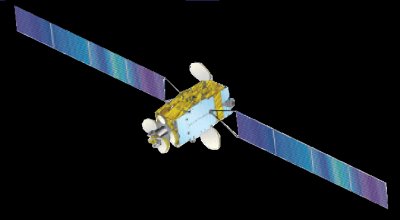Lockheed to buy European satellite for South Korea in F-35 deal | Business Recorder
Asian Defence News: Lockheed to buy European satellite for South Korea in F-35 deal
(Reuters) - Lockheed Martin Corp (LMT.N) said it will buy a European-built military communications satellite for South Korea as part of a $7 billion deal to supply Seoul with 40 F-35 fighter jets, in what industry observers call among the most unusual "offset" agreements ever to accompany a major arms sale.
U.S. government and industry officials said they believed it was the first time that a U.S. firm had included a satellite in a so-called "offset agreement" with an arms deal. In this case, Seoul's offset target was 50 percent of the value of the jets.
Marco Caceres, an analyst with the Virginia-based Teal Group, said the new satellite may be built by France's Thales (TCFP.PA), which has already built several satellites for South Korea. The satellite was likely medium-sized and would cost several hundred million dollars to build, plus another $100 million to launch, he said.
not new, SATCOM was included in the original deal
Seoul Eyes Secure Satcom, KF-X Tech In F-35 Deal | Defense content from Aviation WeekWith Seoul’s March 24 announcement of its long-held intent to purchase the F-35A, South Korea is likely securing an offset deal that will include a new military communications satellite and technical assistance in the country’s plans to develop an indigenous stealthy KF-X fighter.
Also in the offset proposal is a secure satellite communications satellite; Lockheed is building the newest U.S. Air Force jam-proof satellite called the Advanced Extremely High Frequency spacecraft. It is built on the company’s A2100 bus and includes the latest security measures to avoid interference or jamming. The offset also includes “necessary control equipment and technical training,” Rein says. The deal could cover delivery of the new satellite, launch and turnover of the operational system.
 |
| Koreasat 5 Launch |
In the Space sector, Thales Alenia Space was prime contractor for the Koreasat 5 dual-purpose commercial and military communication satellite programme.
South Korean Satellite Launched to Serve Dual Purpose
Carrying a high-powered payload of broadband transponders, Koreasat 5 will operate on behalf of SouthKorea's Agency for Defense Development and the KT Corporation - a leading telecommunications provider in the Asia-Pacific region. A total of 36 transponders are split between the two co-owners.South Korea and Satellite Communication Systems
With the new satellite, South Korea's military will have a dedicated system to offer a secure route for critical communications throughout the armed forces. Eight channels in the super high frequency band and four Ka-band transponders make up the craft's payload. Koreasat 5 is the nation's first satellite with military communications as a primary objective.
South Korea's first two spacecraft were based on the UK's Surrey Satellite TechnologySpace Law and Policy in the Republic of Korea_D.H.Kim.pdfLtd. (SSTL) microsatellite design. Kitsat 1 (aka Uribyol 1, 10 August 1992) and Kitsat 2 (aka Uribyol 2, 26 September 1993) were carried as piggyback passengers on Ariane flights to LEO. Although neither of the spacecraft were true communications satellites, both were equipped with a modest store-and-forward messaging capability (References 374-377).
The long-range goalof South Korea is to develop its own spacecraft. A step in this direction was taken with Kitsat 2, which was assembled in South Korea from UK components. The next step is the much delayed, dual-purpose Kompsat. Relying heavily on a TRW spacecraft bus and engineering expertise, South Korea will assist in the design and manufacture of Kompsat which will perform remote sensing as well as serve as a communications relay. The 400-kg spacecraft will be inserted into a 685-km, sun-synchronous orbit in 1998 or 1999 (References 378-382). South Korea has discussed a similar venture with the PRC (References 383-385).

No comments:
Post a Comment